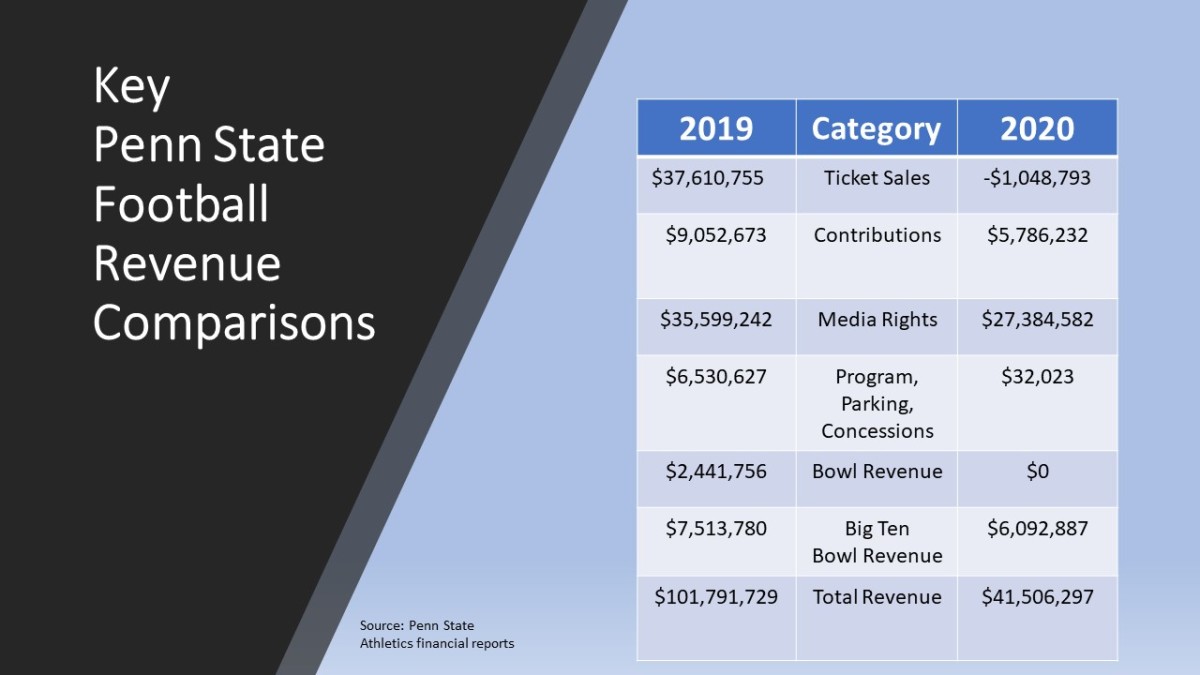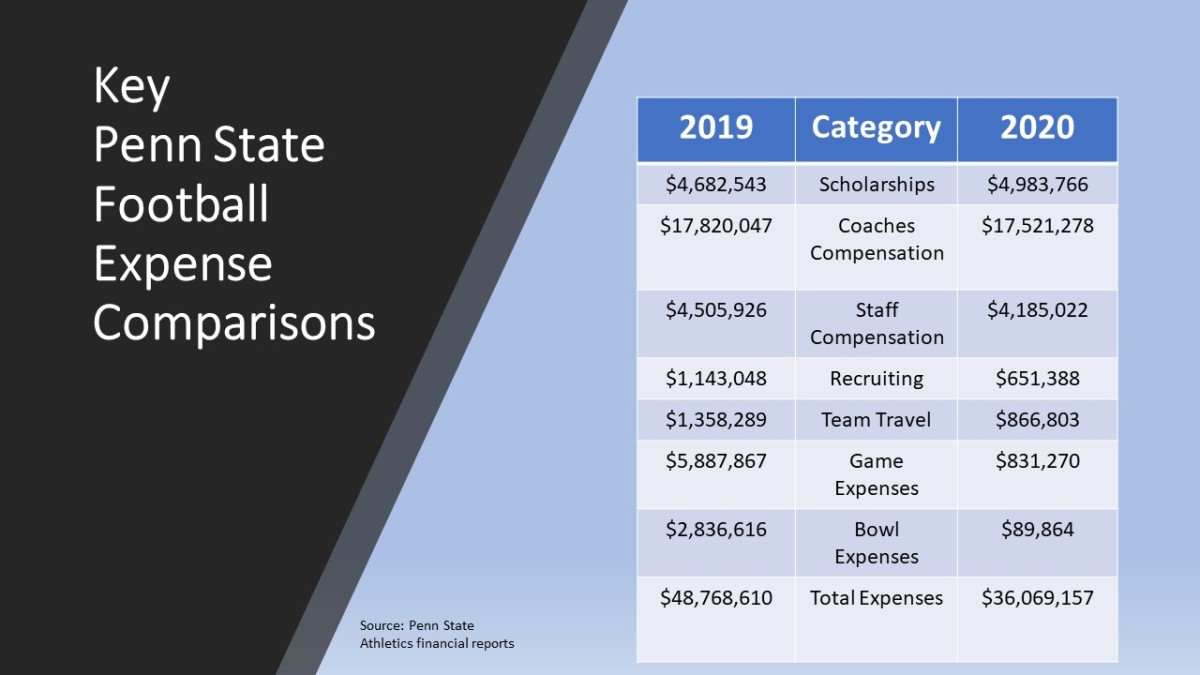Inside Penn State's Fascinating 2020 Football Budget
Penn State recently released its 2021 athletics financial report, which expectedly reported a $23.9 million deficit for the fiscal year. The report covers June 2020-July 2021, the heart of COVID-19's impact on Penn State's athletic department.
The report underscored the pandemic's disruption of Penn State sports, one that Athletic Director Sandy Barbour referenced significantly last year. The athletic department had projected a revenue shortfall of $70 million for fiscal year 2021, which it planned to offset through cost-cutting measures, its budget surplus and a university loan.
For FY 2021, Penn State reported $130,050,505 in expenses and $106,159,518 in revenue, leading to a shortfall of $23,890,987. The prior year, Penn State reported a surplus of nearly $7.2 million. And in 2019, Penn State reported a surplus of almost $4.2 million.
Revenue and expenses were significantly down from FY 2020, which was understandable. Penn State did not host fans for home sporting events during the 2020-21 athletic calendar year, which included only five home football games and no bowl appearance. Penn State's athletic department also went more than a year without making off-campus recruiting visits.
Still, it's fascinating to note that Penn State's football program still generated a surplus in a season without fans. It wasn't much, about $5.4 million, or a little over 10 percent of the $53 million it generated during the 2019 season.
However, that Penn State generated any football surplus in 2020 demonstrated the power of the Big Ten television contract in a year when the program lost more than $1 million regarding ticket sales.

During the 2020 season, Penn State's primary loss, of course, was ticket sales, which topped $37.6 million in 2019. All other primary revenue sources were down as well, resulting in a $60 million difference between the 2019 and 2020 seasons.
But Penn State also saved money (about $12 million) by not going to a bowl game, requiring fewer stadium personnel on gamedays and skipping recruiting trips. Note, however, that coaching salaries were about the same.

In 2019, when Penn State generated a record $101.8 million in revenue, the program ranked third nationally in total attendance, hosting 739,747 fans at Beaver Stadium. That bodes well for a 2021 financial rebound, since the Lions hosted 747,595 fans (second nationally). It also helped fuel the 10-year, $70 million guaranteed contract that head coach James Franklin signed in November.
Franklin said the contract represented Penn State's "renewed commitment" to the football program. Upon emerging from the COVID year of 2020, Penn State appears poised to keep that commitment.
Some other interesting numbers from Penn State's FY 2021 report:
- $32.1 million: What Penn State spent on coaching salaries, its biggest budget line item, across all sports.
- $21.3 million: The cost of scholarships for 603 athletes. A total of 87 football players received about $5 million in scholarships.
- $427,930: The amount Penn State paid in severance to coaches: $381,883 in football and $34,047 in men's basketball.
- $1.4 million: The men's basketball team's surplus, which resulted from the nearly $7.5 million from the NCAA and Big Ten media rights contracts.
- $0: Penn State reported that it received no direct financial support from state or federal funds, no support from student fees and no direct university funds.
Read more
Receiver Mitchell Tinsley makes a strong first impression at Penn State
Penn State THON sets fundraising record
On Nick Scott, Saquon Barkley and a winding road to the Super Bowl
